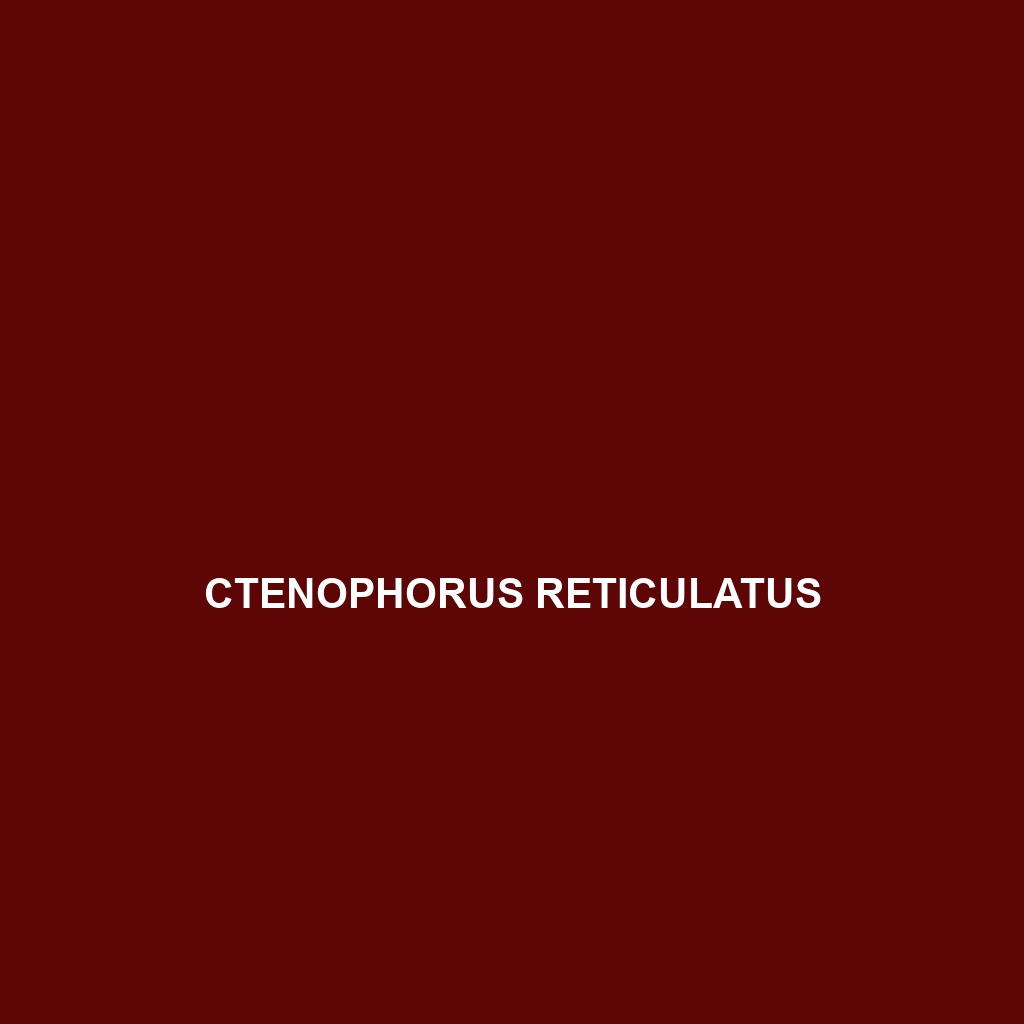Species Description of Ctenophorus reticulatus
Common Name: Ctenophorus reticulatus
Scientific Name: Ctenophorus reticulatus
Habitat
Ctenophorus reticulatus, commonly known as the Reticulated Dragon, primarily inhabits the arid and semi-arid regions of Australia. This species is predominantly found in the inland areas, particularly in sandy or rocky substrates which offer both shelter and adequate foraging opportunities. The Reticulated Dragon prefers habitats such as open woodlands, grasslands, and scrublands where it can thrive in the warm Australian climate.
Physical Characteristics
The Reticulated Dragon is a medium-sized lizard, typically reaching lengths of 20 to 25 cm (8 to 10 inches). Its body is characterized by a flattened shape that aids in camouflage against the sandy terrain. The coloration is a striking mix of browns and grays, often adorned with intricate reticulated patterns that give it its common name. Notable features include a prominent crest along the back, which may vary in size depending on age and sex, and distinct lateral stripes that enhance its visual appeal.
Behavior
Ctenophorus reticulatus exhibits diurnal behavior, meaning it is most active during the day. This species is known for its territorial displays, especially during mating season, where males engage in elaborate posturing and may perform push-ups to assert dominance. The Reticulated Dragon is also adept at basking in the sun, which is essential for regulating its body temperature. Its agile movements allow it to quickly evade predators while foraging for food.
Diet
The diet of Ctenophorus reticulatus primarily consists of insects, with a strong preference for crickets, grasshoppers, and beetles. As an insectivorous reptile, it relies on its keen eyesight to spot and capture its prey, often hunting in the leaf litter where insects are abundant. This species occasionally consumes plant material, making it an opportunistic feeder that contributes to its adaptability in diverse habitats.
Reproduction
Ctenophorus reticulatus undergoes seasonal breeding, typically commencing in the spring months from September to November. Courting rituals involve males displaying vibrant colors and performing mating dances to attract females. Females lay clutches of 5 to 10 eggs in sandy, well-drained soil, which they bury for protection. The eggs incubate for several weeks before hatching, with the young lizards dispersing soon after emerging, showcasing their independence early in life.
Conservation Status
Currently, Ctenophorus reticulatus is classified as ‘Least Concern’ on the IUCN Red List. However, habitat destruction due to urban development and agriculture poses potential threats. Continuous monitoring of its populations is essential to ensure this species remains stable, as local environments face increasing pressures from human activities.
Interesting Facts
The Reticulated Dragon is known for its unique ability to change color slightly, especially when stressed or during aggressive displays. Additionally, it has a fascinating behavioral quirk known as ‘shadow basking,’ where it positions itself to maximize sun exposure while remaining partially concealed from predators.
Role in Ecosystem
Ctenophorus reticulatus plays a vital role in its ecosystem as both a predator and prey. By consuming insects, it helps regulate their populations, while also serving as food for larger predators such as birds of prey and snakes. This intricate balance highlights the importance of Ctenophorus reticulatus in maintaining ecological health within its native habitat.
